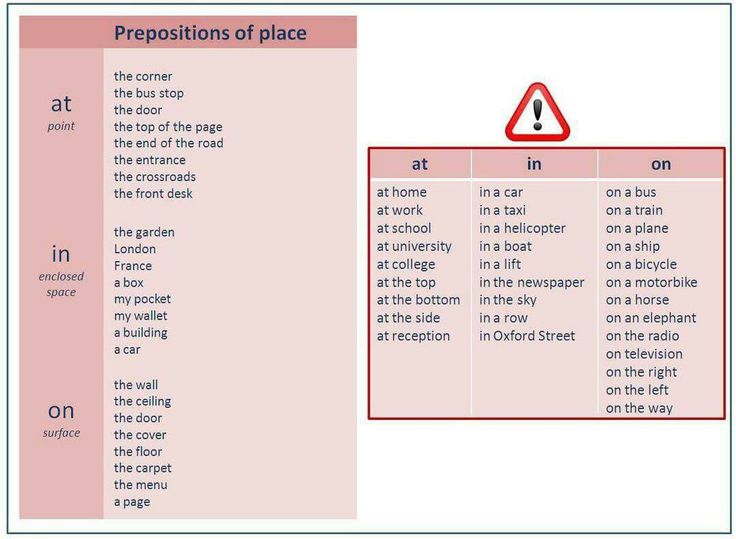Headache 2 Days in a Row: What to Do If a Headache Won’t Go Away
What to do if you have a headache that lasts for more than one day? Discover the common causes of persistent headaches and when to seek medical attention.
Understanding Persistent Headaches
Headaches are a common occurrence, and most go away on their own. However, some headaches can last for days, leaving you feeling miserable and unable to function. Understanding the potential causes of a persistent headache is the first step in finding relief.
Common Causes of Lingering Headaches
There are several reasons why a headache may persist for more than a day. Some of the most common causes include:
- Stress and Tension: Prolonged stress and muscle tension in the neck and shoulders can lead to a persistent tension headache.
- Dehydration: Not drinking enough fluids can cause a headache that lasts until you rehydrate.
- Lack of Sleep: Disrupted sleep patterns can contribute to ongoing headaches.
- Hormonal Changes: Hormonal fluctuations, such as those experienced during menstrual cycles or menopause, can trigger persistent headaches.
- Medication Overuse: Taking too many pain relievers can paradoxically lead to a rebound headache.
- Underlying Conditions: More serious underlying conditions, such as migraines, cluster headaches, or even brain tumors, can also cause persistent headaches.
When to Seek Medical Attention
Most headaches that last for more than a day are not life-threatening, but it’s important to know when to seek medical attention. Seek immediate care if you experience:

- A severe headache that began abruptly (within a few seconds)
- A migraine that has lasted several days or even weeks
- Any new symptoms you haven’t previously experienced, such as disorientation, loss of vision or vision changes, fatigue, or fever
- A severe or ongoing headache during pregnancy, which could indicate complications like preeclampsia
- A headache associated with HIV or another immune system disorder
If your headache is persistent but not accompanied by these concerning symptoms, it’s still a good idea to see your healthcare provider. They can help identify the underlying cause and provide appropriate treatment to help you find relief.
Effective Strategies for Relieving Persistent Headaches
While you wait to see a healthcare provider, there are several things you can do to try to alleviate a persistent headache:
- Stay hydrated: Drink plenty of water throughout the day to help prevent dehydration-related headaches.
- Manage stress: Practice relaxation techniques, such as deep breathing, meditation, or yoga, to help reduce tension and muscle tightness.
- Get enough sleep: Aim for 7-9 hours of sleep per night to help your body recover and reduce the risk of headaches.
- Limit caffeine and alcohol: Avoid consuming too much caffeine or alcohol, as both can contribute to headaches.
- Try over-the-counter pain relievers: Medications like acetaminophen, ibuprofen, or naproxen can help reduce the pain of a headache, but be careful not to overuse them.
- Apply a cold compress: Placing a cold compress on your forehead or the back of your neck can help constrict blood vessels and reduce inflammation.
When to Seek Specialized Care
If your headache persists despite these self-care measures, or if you experience any of the more serious symptoms mentioned earlier, it’s important to seek medical attention. Your healthcare provider may recommend additional treatments, such as prescription medications, nerve blocks, or even a referral to a specialist, depending on the underlying cause of your headache.

Preventing Future Persistent Headaches
While it’s not always possible to prevent persistent headaches, there are some steps you can take to reduce the risk:
- Manage stress: Practice stress-reduction techniques regularly to help prevent tension-related headaches.
- Maintain a healthy lifestyle: Get enough sleep, stay hydrated, and eat a balanced diet to support overall health and reduce the risk of headaches.
- Identify and avoid triggers: Pay attention to the things that seem to trigger your headaches, such as certain foods or environmental factors, and try to avoid them.
- Seek treatment for underlying conditions: If you have a diagnosed condition, such as migraines or cluster headaches, work with your healthcare provider to manage it effectively.
Remember, persistent headaches can be a sign of a more serious underlying condition, so it’s important to seek medical attention if your headache lasts for more than a day or is accompanied by concerning symptoms. With the right treatment and self-care strategies, you can find relief and get back to enjoying your daily activities.

Headaches – NHS
Most headaches go away on their own and are not a sign of something more serious.
How you can ease headaches yourself
Headaches can last between 30 minutes and several hours.
Do
drink plenty of water
get plenty of rest if you have a cold or the flu
try to relax – stress can make headaches worse
take paracetamol or ibuprofen
try to stay at home and avoid contact with other people if you have a high temperature or you do not feel well enough to do your normal activities
Don’t
do not drink alcohol
do not skip meals (even if you might not feel like eating anything)
do not sleep more than you usually would – it can make the headache worse
do not strain your eyes for a long time – for example, by looking at a screen
Non-urgent advice: See a GP if:
- your headache keeps coming back
- painkillers do not help and your headache gets worse
- you have a bad throbbing pain at the front or side of your head – it could be a migraine or, more rarely, a cluster headache
- you feel sick, vomit and find light or noise painful
Urgent advice: Get an urgent GP appointment or call 111 if:
You or your child has a severe headache and:
- jaw pain when eating
- blurred or double vision
- a sore scalp
- other symptoms, such as numbness or weakness in the arms or legs
Also get an urgent GP appointment or call 111 if your child is under 12 and has any 1 of the following:
- a headache that wakes them at night
- a headache when they wake up in the morning
- a headache that gets progressively worse
- a headache triggered or made worse by coughing, sneezing or bending down
- a headache with vomiting
- a headache with a squint (where the eyes point in different directions) or an inability to look upward
You can call 111 or get help from 111 online.
Immediate action required: Call 999 or go to A&E if you or your child:
- has a head injury – for example, from a fall or accident
- has a headache that came on suddenly and is extremely painful
You or your child has an extremely painful headache and:
- sudden problems speaking or remembering things
- loss of vision
- feel drowsy or confused
- has a very high temperature and symptoms of meningitis
- the white part of the eye is red
Also call 999 or go to A&E if your child is under 12 and has any 1 of the following:
- a headache with vision problems or difficulty speaking, swallowing, balancing or walking
- a headache with drowsiness or a persistent lack of energy
- a headache that starts within 5 days of a head injury
What can cause headaches
The most common reasons are:
- having a cold or flu
- stress
- drinking too much alcohol
- bad posture
- eyesight problems
- not eating regular meals
- not drinking enough fluids (dehydration)
- taking too many painkillers
- having your period or during menopause
Page last reviewed: 09 February 2021
Next review due: 09 February 2024
What to Do If a Headache Won’t Go Away
A long lasting headache that persists for days can be a symptom of a neurological condition, such as migraine, a headache disorder, or an injury.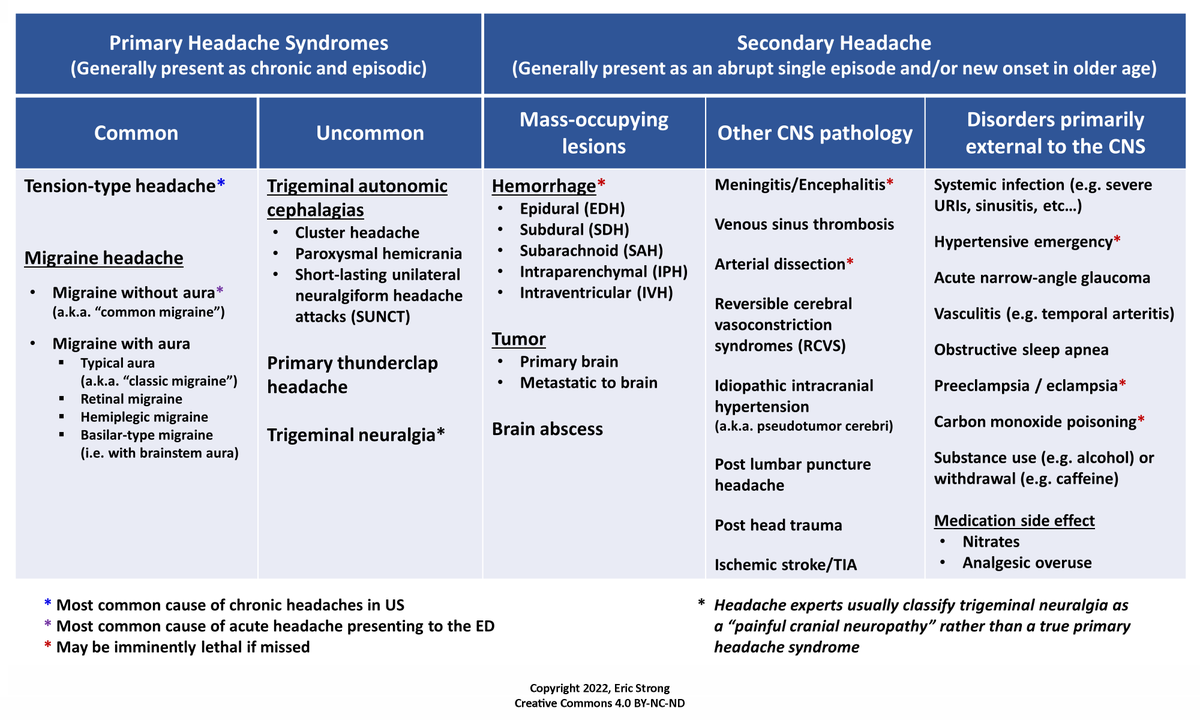 You may need medical care, especially if you have other symptoms.
You may need medical care, especially if you have other symptoms.
Everyone experiences a headache from time to time. It’s even possible to have a headache that lasts for more than one day. There are many reasons why a headache can last a while, from hormonal changes to more serious underlying conditions.
While it can be alarming for a headache to last a long time — so long that you may not be able to sleep it off — most headaches aren’t life threatening. But it’s no fun when a lingering headache affects your ability to do the things you enjoy.
Let’s take a look at what can cause these headaches and how you can get relief.
If you’ve been experiencing the same headache for more than one day, it’s possible that you could have a more serious underlying condition that requires emergency medical care. Seek medical attention right away if you’re experiencing:
- a severe headache that began abruptly (within a few seconds)
- a migraine that has lasted several days, or even weeks
- any new symptoms you haven’t previously experienced along with the headache (disorientation, loss of vision or vision changes, fatigue, or fever)
- kidney, heart, or liver disease with a headache
- a severe or ongoing headache in pregnancy, which could indicate complications like preeclampsia
- HIV or another immune system disorder along with a headache
- headache associated with fever and stiff neck
There are multiple conditions that can cause a persistent headache that lasts for more than a day.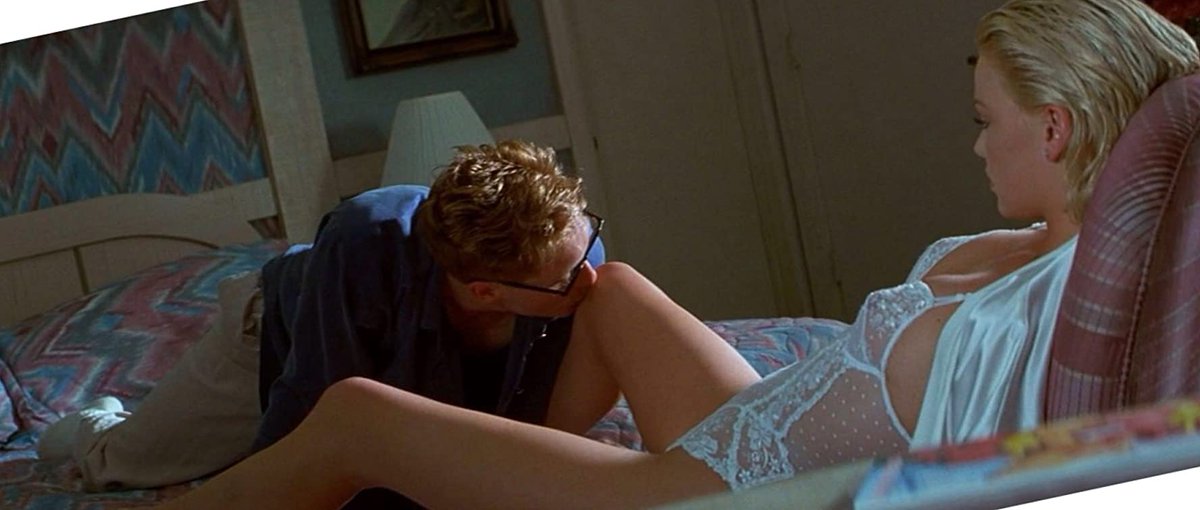 Some of those include:
Some of those include:
Rebound headaches
Regularly taking over-the-counter (OTC) pain medication for your headaches can actually cause your head to hurt between doses. While this type of headache often doesn’t hang around, it can recur over the course of a day or more.
Migraine
Migraine can be a severe type of headache that can last for days, or even weeks, at a time. They start with a feeling of general illness that takes hold one or two days before the headache begins. Some people experience aura, or bright, flashing vision changes before the pain begins.
Then, there’s the headache itself, with symptoms that may include:
- throbbing pain on either side (or both sides) of your head
- pain behind your eyes
- nausea
- vomiting
- light and sound sensitivity
- sensitivity to odors and fragrances
After your migraine lifts, you may experience a hangover-like feeling of fatigue and exhaustion.
Headaches related to stress or mood disorders
Anxiety, stress, and mood disorders can trigger headaches that linger for more than a day. Specifically, those with panic disorder or generalized anxiety disorder tend to experience prolonged headaches more often than those without.
Specifically, those with panic disorder or generalized anxiety disorder tend to experience prolonged headaches more often than those without.
Cervicogenic headaches
Sometimes your headaches actually aren’t coming from your head at all. They’re coming from your neck.
In cervicogenic headaches, pain is referred to your head from an area in your neck. You may not even realize where it’s originating from. And if the underlying cause — the problem in your neck — isn’t treated, your headache won’t go away.
Cervicogenic headaches can be caused by injuries, arthritis, bone fractures, tumors, or infection. Your posture or falling asleep in an awkward position could cause a cervicogenic headache. It’s also possible that disc-related wear can also cause these types of headaches.
Concussions and other head injuries
If you’ve recently experienced a concussion or similar head injury, you could be dealing with an ongoing headache. This is called post-concussion syndrome, and it’s a mild injury to your brain caused by the initial trauma.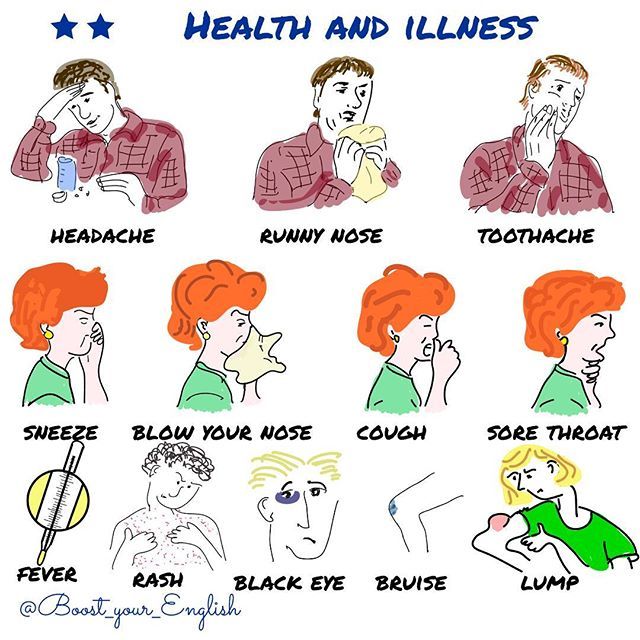 It can last for months after a concussion — possibly up to a year.
It can last for months after a concussion — possibly up to a year.
Symptoms of post-concussion syndrome include:
- recurrent or ongoing headaches
- fatigue
- dizziness
- periods of irritability
- difficulty concentrating
- short-term memory issues
- anxious feelings
- ringing sensation in your ears
- difficulty sleeping
- sensitivity to sound and light
- blurred vision
- sensory disturbances like a lessened sense of smell and taste
A variety of treatment options, including home treatments and medical care, can help relieve symptoms of a prolonged headache.
Rebound headaches
Overusing OTC pain medications can actually cause headaches. These headaches are known as rebound or medication overuse headaches.
If you’re experiencing ongoing rebound headaches, you can start addressing your symptoms at home by reducing the amount of OTC medications you take.
You shouldn’t take medicine for pain for more than 15 days out of every month, and prescription pain medications shouldn’t be used for more than 10 days out of every month.
Your doctor or pharmacist can guide you regarding medication ingredients and potential side effects.
If you continue to experience chronic headache pain, your doctor may be able to help. Make an appointment to speak with them about preventative medicines.
Ask your healthcare professional for alternative treatment options for headaches and migraine, like antidepressants for headaches caused by chronic tension.
Waiting until your headache starts could keep you in a cycle of OTC treatment, so prevention is key.
Migraine
To address your migraine symptoms at home consider building a predictable schedule that minimizes stress and keeps you in a routine. Focus on adhering to regular mealtimes and a solid sleep schedule.
Exercise can help prevent migraine attacks, but be sure to warm up slowly before diving right in, as too much strenuous exercise can cause a headache.
Prescriptions containing estrogen, like the birth control pill, could also contribute to your migraine. You might need to speak with your doctor about stopping or changing those medications.
You might need to speak with your doctor about stopping or changing those medications.
Your doctor may prescribe medications specifically for migraine that can prevent the headaches from occurring. They may also prescribe pain medications that are stronger than OTC options to stop your symptoms once they’ve begun.
Anti-nausea medication or corticosteroid treatments are sometimes prescribed by physicians for migraine symptoms as well.
Headaches related to stress or mood disorders
Work to reduce stress and promote relaxation in your environment. Self-massage or massage therapy may help ease the tension that causes ongoing headaches. You may also benefit from reducing stimuli and resting in a dark, quiet room.
Your doctor can help you address your stress, anxiety, or mood disorder through a combination of cognitive behavioral therapy and medication.
Your doctor may prescribe antidepressants or anti-anxiety medications that can help relieve the tension and stress causing your prolonged headaches. Some medications for anxiety also work to reduce the number or intensity of headaches.
Some medications for anxiety also work to reduce the number or intensity of headaches.
Cervicogenic headaches
Because cervicogenic headaches can be caused by injuries or issues in the neck, the underlying cause must be addressed to relieve your headache. Your doctor will examine you to rule out other types of headaches arising from other sources, like tension headaches.
Once the cause of pain is identified, your doctor may prescribe pain medication or nerve blocks to manage pain. They may also recommend physical therapy or a therapeutic exercise routine for pain management.
Concussions and other head injuries
While post-concussion syndrome does not have a specific treatment regimen, your doctor will work with you to address your specific symptoms. You can also take comfort measures at home to reduce your pain, like resting and limiting stimuli when you’re hurting.
Your doctor might advise you to take OTC medication for mild pain, or they may prescribe stronger pain management medication for headaches.
However, remember that overuse of pain medication can contribute to rebound headaches. So discuss with your doctor if you feel you’re taking too much.
Unexplained or general headaches
For unexplained, ongoing headaches, you may be able to manage or ease your symptoms at home through comfort measures, rest, and responsible use of medication.
Massage therapy can ease muscle tension that contributes to headaches, or you can perform self-massage techniques at home.
Managing your stress can help reduce your pain. Also, consider reducing the intensity of your exercise schedule or focusing on your form while exercising.
If your headache continues to persist, see your doctor. You may have an underlying condition that they can diagnose. With proper treatment, you’ll be able to address your persistent headache pain and return to your normal quality of life.
You may be able to prevent persistent headaches before they begin by taking a few steps every day. These include:
These include:
- drinking plenty of water to avoid dehydration
- exercising regularly
- avoiding environmental triggers
- getting needed support for your mental health
- seeking hormonal support, particularly if you’re premenopausal or experiencing menopause
- reducing stress
Headaches that won’t go away are alarming, but they usually aren’t serious. It’s important to discuss your symptoms with your doctor.
With the appropriate diagnosis and the right approach to treatment, you can get relief from your persistent headache and return to your usual quality of life.
The second day my head hurts: possible causes
The second day my head hurts: possible causes – Clinic of Rehabilitation Neurology
Gimranov Rinat Fazylzhanovich
Neurologist, neurophysiologist, experience – 33 years;
Professor of Neurology, MD;
Clinic for Rehabilitation Neurology. About the author
Publication date: December 22, 2021
Updated: January 31, 2023
Cephalgia or headache, unfortunately, has become a common occurrence in the lives of many people. It occurs from time to time due to fatigue, weather changes or other reasons. It lasts, as a rule, from minutes to 3-4 hours and gets rid of it with an anesthetic tablet. However, there are exceptions when a person suffers for a much longer time.
It occurs from time to time due to fatigue, weather changes or other reasons. It lasts, as a rule, from minutes to 3-4 hours and gets rid of it with an anesthetic tablet. However, there are exceptions when a person suffers for a much longer time.
If you have a very bad headache for 2 or more days in a row, then before deciding what to do, you need to establish the reasons for this feeling. This can be either accumulated fatigue or the influence of the weather, or a manifestation of a serious pathology that requires the intervention of doctors. Assessing the risk, it is worth paying attention to concomitant symptoms and the influence of external factors.
Article content:
- 1 Causes
- 1.1 Internal triggers
- 1.2 External triggers
- 2 Dangerous conditions
- 3 Treatment
- 4 Prevention
- 5 References
Causes
Severe headache for a day or even 2 days in a row, can have both external causes and be the result of internal pathology.
A similar condition is provoked by depression of the central nervous system, it can occur against the background of frequent use of analgesics.
It can be a symptom of organic damage to brain tissue, vascular problems, spinal disorders, etc.
Internal triggers
Common diseases that cause such prolonged cephalalgia:
- Meningitis or inflammation of the meninges caused by a viral or bacterial infection [1]. It is accompanied by an increase in temperature, a violation of the perception of the surrounding reality. A characteristic symptom is the inability to tilt the head forward.
- Encephalitis or inflammation of the tissues, actually, of the brain. life-threatening pathology. It also has an infectious nature, often leaves behind consequences, a neurological deficit.
- Head injury (TBI) and post-traumatic syndrome. They manifest themselves as cephalalgia even months after the concussion episode.
- Abrupt changes in intracranial pressure.
 A typical picture for a condition such as vegetative-vascular dystonia.
A typical picture for a condition such as vegetative-vascular dystonia. - Pathologies of the cardiovascular system, leading to a sharp decrease in oxygen supply to the brain.
- Osteochondrosis of the cervical spine. Pathological changes in the cervical vertebrae lead to disorders of the blood supply to the brain, causing pinching of the nerves with pain.
- Abuse of alcoholic beverages. In the presence of dependence on alcohol, a hangover attack with severe cephalgia can last 2-3 days.
- Migraine (hemicrania). Not dangerous in itself, but an extremely unpleasant condition. Features are the localization of pain on one side of the head, the appearance of light and sound fear [2].
External provoking factors
Severe headache for the second day in a row or two or three days of attacks may occur due to the negative impact of the environment:
- Chronic fatigue, gradually accumulating and not disappearing during the night due to the short time allocated for rest and its irrational spending.

- Regular overwork, physical and intellectual, psycho-emotional.
- Flight, change of climate zone or altitude above sea level, time zone. An extremely unpleasant sensation is associated with the journey undertaken. The body needs time to acclimatize, adapt to new external conditions.
- Starvation or overeating. Lack or excess of food equally negatively affects the well-being of a person.
- Stiffness and overload of the muscles of the shoulder girdle and neck (tension headaches). Often found in people who spend their working day at the computer.
- Change of weather, changes in atmospheric pressure. Moreover, both the deterioration of weather conditions and their improvement negatively affect. So do not be surprised to feel unwell on a bright warm day after a week of prolonged rains.
Various diseases of the head organs can also provoke prolonged pain: from toothache and sinusitis to glaucoma.
So it is important when evaluating the condition that has arisen, to take into account the accompanying symptoms.
Dangerous Conditions
People who have regular cephalalgias have usually found a remedy that helps them.
However, if your head hurts for more than a day, the standard methods of solving the problem do not help or only briefly relieve the symptom, then it is time to seek help from specialists.
It is also worth paying attention to other signs indicating the danger of the condition that has arisen:
- cephalalgia does not go away after using the usual remedy;
- increases sharply with every sudden movement, coughing and sneezing;
- does not subside after 24-48 hours, increases;
- neck loses mobility, movements with it bring pain;
- body temperature rises, even slightly;
- disturbed consciousness, perception of the world;
- does not disappear during sleep, makes you wake up, increases at night;
- there are problems with vision, orientation in space;
- there is increased fatigue, weakness, possibly numbness of the limbs and convulsions;
- gait becomes unsteady, dizziness appears;
- eyes redden, painful on movement, touching the temples aggravates the pain.

In the presence of the above symptoms, it is up to the doctor to determine why the head hurts badly for two days in a row and what to do in this case. Attempts to drown out cephalalgia with high doses of the usual painkillers can lead to the loss of precious time in the event of a life-threatening pathology.
Treatment
Before starting a full-fledged treatment, it is necessary to determine why the head hurts very badly for 2 days in a row.
There is no universal treatment for chronic cephalalgia. Methods are selected depending on the specific diagnosis.
When deciding which doctor to see for cephalalgia, choose an accessible doctor. Primary care will be provided by a therapist. But it is better if specialists immediately take up the examination and treatment.
When contacting a doctor, he will find out the characteristics of pain and accompanying signs of the development of the disease. He will ask you to describe your usual way of life in order to identify the presence of negative influencing factors.
If after the first visit it is not possible to identify a specific problem, then hardware studies are assigned [3]. Instrumental diagnostics will help to identify pathologies and lesions of the brain, organs of the head, cervical spine and cardiovascular system.
- Physiotherapy, which includes a complex of different procedures tailored to each patient. The clinic appoints and conducts massage and self-massage courses, sessions of physiotherapy exercises.
- Surgical intervention is required in extreme cases, when other means cannot solve the problem.
After, based on the results of tests and examinations, the doctor will prescribe a selected complex therapy. In general, to get rid of long-term cephalgia, the following approaches are used (successively and in combination):
- Drug treatment. Symptomatic painkillers are prescribed, with them – drugs that fight the cause of such well-being. A drug complex is prescribed, which is taken as a course, during attacks or for prophylactic purposes.

If you have a very bad headache for the second day in a row, and the usual remedies do not help, ask what to do, it is better to ask a doctor, and not use unknown folk remedies. They can not only not work, but also harm.
In the presence of chronic diseases or peculiarities of the organism, it is worth consulting with your doctor before using any new medicine.
Prevention
If a severe headache for a day or 2 consecutive days appears periodically, you need to find out the causes and eliminate them.
You can try to prevent attacks in advance by taking preventive measures to keep you healthy for a long time. The main thing is to eliminate the probable causes, triggers that trigger prolonged cephalgia [4].
- restore the sleep pattern, not only sleep for the right amount of time (8-9 hours), but also do it in a comfortable position on an orthopedic mattress and pillow;
- avoid hunger, dehydration or overeating.
- when working at a computer, regularly arrange warm-ups to prevent leakage and spasm of the neck muscles;
- avoid excessive stress or mental strain;
- set aside time for mandatory rest from work, with moderate physical activity.

You should not endure and worsen the quality of your life if prevention does not help. It is better to seek help from a doctor in the clinic.
Online consultation available.
References
Was this article helpful?
You can subscribe to our newsletter and learn a lot of interesting things about the treatment of the disease, scientific achievements and innovative solutions:
Your e-mail
I agree with the privacy policy and the processing of personal data
Please leave this field empty.
We’re sorry!
How can this article be improved?
Please leave this field empty.
For more information, you can check with neurologists on our forum! Go to Forum
If you have any questions, ask your doctors on our forum!
Go to forum
ADD/VIEW COMMENTS
Gimranov Rinat Fazylzhanovich
Make an appointment with a specialist
×
Headache – causes, in which diseases it occurs, diagnosis and treatment methods
I confirm
More
Encephalitis
Tick-borne encephalitis
Poliomyelitis
Hypercholesterolemia
Migraine
Hyperthermia
Colds
SARS
Cerebral ischemia
51423
31 July
Headache – the causes of the appearance, in which diseases it occurs, diagnosis and methods of treatment.
Headache is based on irritation of pain receptors located in:
- dura mater and brain vessels;
- periosteum of the skull, vessels of the soft tissues of the head, muscles.
The brain tissue itself does not contain pain receptors.
Types of headaches (cephalgia)
Headaches are divided into primary and secondary. Headache is considered primary if it is the main manifestation of brain disease, such as migraine and tension-type headache.
Secondary headache is a symptom of other disorders, such as head trauma, chronic cerebral ischemia, viral diseases, diseases of the cervical spine, etc.
Let’s take a look at the four most common types of headaches.
Possible causes
Tension headache
Tension headache is the most common form of primary headache. Psycho-emotional stress, depression, anxiety and various phobias, overstrain of the muscles of the shoulder girdle are the main causes of tension headaches.
Migraine headache
Migraine occurs in women about three times more often than in men, and about 60-70% of all cases of migraine in women are the so-called menstrual migraine. However, the causes and mechanism of development of migraine attacks are not fully understood. At any age, both in men and women, migraine attacks can be provoked by emotional and physical overload, malnutrition, drinking alcohol, changing weather conditions, harsh noise, strong odors, etc.
Headache with colds
Headache with colds is caused by hyperthermia and the damaging effect of microbial toxins on brain cells.
Headache in chronic cerebral ischemia
The cause of this pain, which is the most common secondary headache in elderly patients, is the pathology of the cerebral vessels, in which blood circulation is disturbed and the blood supply to the brain tissues deteriorates.
The result is progressive brain dysfunction.
What diseases occur
Tension headache
Tension headache is based on irritation of the structures of the central nervous system (CNS), called the nociceptive system. Myogenic, stress, psychogenic headaches are tension headaches.
Most often, tension headache occurs at a young and working age.
In cases of tension headache, the person experiences bilateral, usually mild, pressing and squeezing, monotonous and dull headaches. Attacks of such pain are accompanied by fatigue, nervousness, impaired appetite and sleep, and decreased performance. The duration of the attack is from 30 minutes to several days.
Migraine headache
Indicates only one disease – migraine, since the attacks of such cephalalgia have a peculiar character. Migraine pain is paroxysmal, throbbing, of moderate or severe intensity. It covers half of the head.
The pain may be aggravated by physical activity, tilting the head, often accompanied by nausea, vomiting.
Bright light, sharp sound, strong smell increase the pain. A migraine attack may be preceded by an aura lasting up to one hour – a collection of visual, auditory, olfactory or other neurological symptoms.
Headache during colds
Occurs with most acute and chronic diseases of the upper and lower respiratory tract caused by bacteria or viruses. In some cases, the intensity of such cephalgia correlates with the severity of fever, the strength of the cough, sore throat and other symptoms. The pain most often spreads throughout the head.
Headache in chronic cerebral ischemia
ic brain injury). In the clinical picture of chronic cerebral ischemia, dizziness, cognitive decline, emotional lability (unstable mood), motor-coordination disorders, and perception disorders (tinnitus, “flies” before the eyes) become indispensable companions of headaches. Headaches are usually mild, distributed throughout the head, and prolonged.
Diagnostics and examinations
Tension headache and migraine headache, headache with colds
Diagnosis is made by a neurologist based on analysis mnesia and evaluation of patient complaints.
Headache in chronic cerebral ischemia
The key radiological examination in chronic cerebral ischemia (ultrasound dopplerography of cerebral vessels)
Duplex scanning of the brachiocephalic arteries with color Doppler flow mapping
Examination to evaluate blood flow in the vertebral and carotid arteries.
RUB 3,690
Sign up
USG recognizes only relatively large stenoses of cerebral vessels caused by atherosclerotic plaques. CT
CT of the brain and skull
Scanning of the brain, skull and surrounding tissues, which allows diagnosing various pathologies.
RUB 4,890
Sign up
and MRI
CT scan of the brain and skull
Scanning of the brain, skull and surrounding tissues, which allows diagnosing various pathologies.
RUB 4,890
Sign up
Contrast injection
The contrast agent is administered intravenously.
RUB 4,590
Sign up
MRI of the brain
Safe and informative scanning of brain structures for the diagnosis of its pathologies.
RUB 5,640
Sign up
also distinguish between extensive brain lesions due to strokes, but not finely diffuse foci characteristic of chronic cerebral ischemia. In chronic cerebral ischemia, conservative treatment is prescribed.
What should you do when you see one?
Pain is always a sign of a malfunction in the body. You can not tolerate pain or self-medicate. With regular headaches (more than five times a month), it is necessary to consult a doctor as soon as possible.
With regular headaches (more than five times a month), it is necessary to consult a doctor as soon as possible.
Tension headache
Stop pain attack with analgesics, non-steroidal anti-inflammatory drugs (NSAIDs), antispasmodics. It is important to remember that many analgesics cannot be taken in the presence of chronic diseases (in particular, with lesions of the gastrointestinal tract, liver and kidneys). Indications and contraindications for the use of certain drugs should be discussed with your doctor.
Migraine headache
Patients with mild attacks are recommended to use NSAIDs and analgesics, with moderate and severe manifestations – specific anti-migraine drugs prescribed by a neurologist after a comprehensive examination.
Cold headache
The main way to deal with such pain is to treat a cold.
Headache in chronic cerebral ischemia
An important aspect of therapy is the fight against atherosclerotic changes in the vessels and cerebral ischemia. It is also necessary to monitor the manifestations of concomitant diseases, for example, arterial hypertension and diabetes mellitus.
It is also necessary to monitor the manifestations of concomitant diseases, for example, arterial hypertension and diabetes mellitus.
Which doctors should I contact?
Tension headache:
- to a neurologist, psychotherapist;
Migraine headache:
- see a neurologist,
therapist
Headache with colds:
- k
therapist, ENT doctor;
Headache in chronic cerebral ischemia:
- k
neurologist, and
cardiologist and
endocrinologist.
Mandatory control of diseases included in the metabolic syndrome group: type 2 diabetes mellitus (DM 2), hypertension, obesity and atherosclerosis.
Treatment
Tension-type headache
Most patients with tension-type headache require therapy prescribed by a psychotherapist and a neurologist. It is also important to pay attention to relaxation and adequate physical activity.
Migraine headache
Treatment includes relief and prevention of attacks.
Headache with colds
Therapy is aimed at treating the underlying disease.
Headache in chronic cerebral ischemia
As a rule, most patients suffer from several diseases, each of which negatively affects the state of cerebral vessels. Thus, the most reliable way to stop the progression of chronic cerebral ischemia is to prevent complications of diseases that are part of the metabolic syndrome group (arterial hypertension, diabetes mellitus, etc.), which are dangerous in terms of worsening cerebral blood flow.
It is important to give up bad habits (smoking, alcohol abuse, drug use) and follow a diet that includes a large amount of fresh fruits and vegetables and a minimum amount of trans fats.
If chronic ischemia is accompanied by hypertension or diabetes mellitus, daily monitoring of blood pressure and blood glucose levels is advisable. It is necessary to undergo laboratory and instrumental examinations with a certain frequency. You should visit a cardiologist and an endocrinologist at least once a year.
It is necessary to undergo laboratory and instrumental examinations with a certain frequency. You should visit a cardiologist and an endocrinologist at least once a year.
Once every three months, you should take a clinical
Clinical blood test: general analysis, leukoformula, ESR (with microscopy of a blood smear in the presence of pathological changes)
Synonyms: Complete blood count, UAC. Full blood count, FBC, Complete blood count (CBC) with differential white blood cell count (CBC with diff), Hemogram.
Brief description of the study CBC: general a…
Up to 1 business day
Available with house call
RUB 810
Add to cart
and blood chemistry,
Blood chemistry: minimal profile
Up to 1 working day
Available with house call
3 990 RUB
Add to cart
in which attention to the level of glucose
Glucose (in the blood) (Glucose)
Research material
Serum or blood plasma. If it is not possible to centrifuge the sample 30 minutes after collection for serum/plasma separation…
If it is not possible to centrifuge the sample 30 minutes after collection for serum/plasma separation…
Up to 1 working day
Available with house call
335 RUB
Add to cart
glycated hemoglobin,
Glycated hemoglobin (HbA1C, Glycated Hemoglobin)
Synonyms: Blood test for glycated hemoglobin. Glycohemoglobin; HbA1c; Hemoglobin A1c; A1c; HgbA1c; Hb1c.
Brief characteristics of the analyte Glycated hemo…
Up to 1 business day
Available with house call
820 RUB
Add to cart
lipid metabolism indicators
Lipid profile: extended
Up to 1 working day
Available with house call
3 960 RUB
Add to cart
and blood coagulation system,
Hemostasiogram (coagulogram), screening
Synonyms: Hemostasiogram, coagulogram.
Coagulation studies (coagulation profile, coag panel, coagulogram).
Profile Composition:
No. 2 Prothrombin (prothrombin time, prothrombin (according to Quick), INR …
Up to 1 working day
Available with house call
RUB 1,620
Add to cart
it is also necessary to undergo an electrocardiographic examination (ECG),
ECG in 5 minutes
Examination of the functional capabilities of the heart – quickly, painlessly and informatively.
RUB 1,790
Sign up
Echocardiography.
Echocardiography
Examination to assess functional and organic changes in the heart, its contractility, as well as the condition of the valvular apparatus.
RUB 4,190
Sign up
If abnormalities occur, antidiabetic drugs, statins, or anticoagulants may be needed. Ultrasound should be performed at least twice a year
Ultrasound should be performed at least twice a year
Duplex scanning of the brachiocephalic arteries with color Doppler flow mapping
Examination to evaluate blood flow in the vertebral and carotid arteries.
RUB 3,690
Sign up
to control the progression of atherosclerosis of cerebral and aortic vessels.
Sources:
- Clinical guidelines “Migraine”. Developed by: All-Russian Society of Neurologists, Russian Society for the Study of Headache. – 2021.
- Clinical guidelines “Acute respiratory viral infections (ARVI) in adults.” Developed by: National Scientific Society of Infectionists, Russian Scientific Medical Society of Therapists. – 2021.
IMPORTANT!
The information in this section should not be used for self-diagnosis or self-treatment. In case of pain or other exacerbation of the disease, only the attending physician should prescribe diagnostic tests. For diagnosis and proper treatment, you should contact your doctor.
For diagnosis and proper treatment, you should contact your doctor.
For a correct assessment of the results of your analyzes over time, it is preferable to do studies in the same laboratory, since different laboratories may use different research methods and units of measurement to perform the same analyzes.
Recommendations
Increased thirst
5517
May 18
Zinc deficiency
5582
May 14
Craving for sweets
13695
09 April
Show 9 more0010
Iron deficiency
Hyperthermia
Fever
Zinc deficiency
Vitamin D-deficient rickets
Febrile convulsions
Febrile convulsions: causes, conditions, diagnosis and treatment.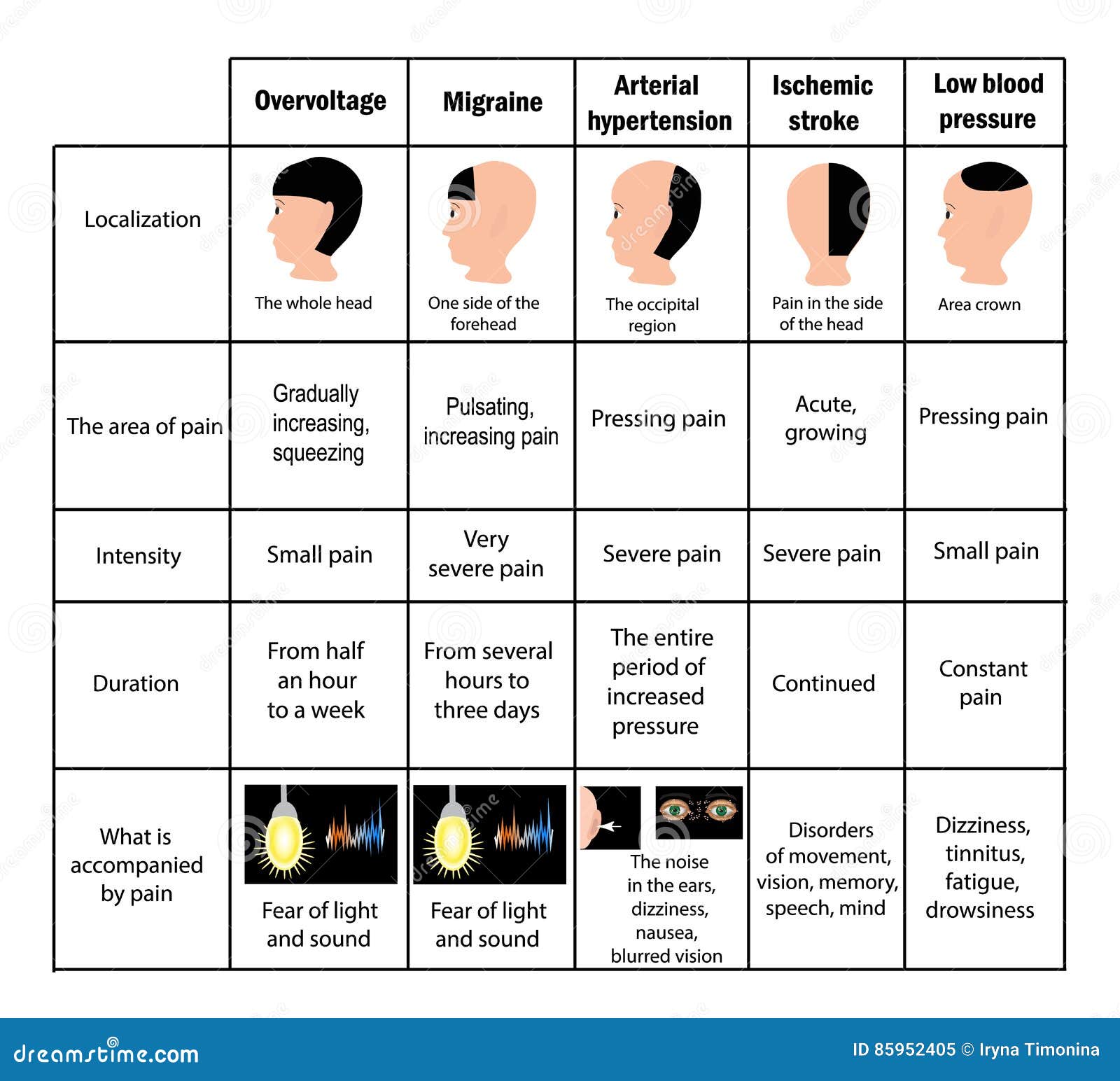
More
Colds
Iron deficiency
Thyrotoxicosis
Stroke
Tearfulness
Crying is a natural human emotional response to stress.
More
Encephalitis
Jaundice
Autism
Cerebral palsy
Fetal hypoxia
Meningitis
Deafness
Speech delay
Delayed speech development: the causes of occurrence, in what diseases it occurs, diagnosis and methods of treatment.
More
Vomiting
Diarrhea
Diabetes mellitus
Encephalitis
Poliomyelitis
Acidosis
Acidosis: causes of occurrence, in which diseases it occurs, diagnosis and methods of treatment.
More
Colds
Iron deficiency
Encephalitis
Rheumatism
Convulsions
Convulsions are involuntary muscle contractions that are paroxysmal in nature.

 A typical picture for a condition such as vegetative-vascular dystonia.
A typical picture for a condition such as vegetative-vascular dystonia.


